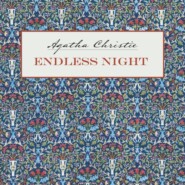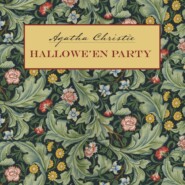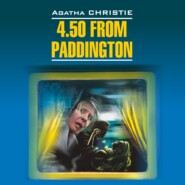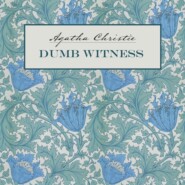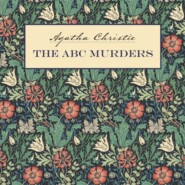По всем вопросам обращайтесь на: info@litportal.ru
(©) 2003-2025.
✖
Agatha Christie’s Complete Secret Notebooks
Настройки чтения
Размер шрифта
Высота строк
Поля
page 21 reads ‘Nov. 6 1965 Cont.’
page 28 is headed ‘Notes on Passenger to Frankfort [sic] 1970’
page 36 reads ‘Oct. 1972’
page 72 reads ‘Book Nov. 1972’
In the space of 70 pages we have moved through seventeen years and as many novels and, between pages 9 and 21, skipped back and forth between 1963 and 1965.
Notebook 31 is dated, on different pages, 1944, 1948 and 1951, but also contains notes for The Body in the Library (1942), written in the early days of the Second World War. Notebook 35 has pages dated 1947, sketching Mrs McGinty’s Dead, and 1962, an early germ of Endless Night.
… and filed …
Although the Notebooks are numbered from 1 through to 73, this numbering is completely arbitrary. Some years before she died, Christie’s daughter Rosalind arranged, as a first step towards analysing their contents, that the Notebooks should be numbered and that the titles discussed within be listed. The analysis never went any further than that, but in the process every Notebook was allocated a number. This numbering is completely random and a lower number does not indicate an earlier year or a more important Notebook. Notebook 2, for instance, contains notes for A Caribbean Mystery (1964) and Notebook 3 for Passenger to Frankfurt (1970), while Notebook 37 contains a long, deleted extract from The Mysterious Affair at Styles (1920). So the numbers are nothing more than an identification mark.
… and labelled …
Some of the Notebooks show attempts on the part of the elderly Agatha Christie to impose a little order on this chaos. Notebook 31 has a loose-page listing inside the front cover in her own handwriting; others have typewritten page-markers indicating where each title is discussed. These brave attempts are rudimentary and the compiler (probably not Christie herself) soon wearied of the daunting task. Most Notebooks contain notes for several books and as three novels can often jostle for space among twenty pages, the page markers soon become hopelessly cumbersome and, eventually, useless.
To give some idea of the amount of information contained, randomly, within their covers, for the purposes of this book I created a table to index the entire contents. When printed, it ran to seventeen pages.
… something scribbled down …
Before discussing the handwriting in the Notebooks, it is only fair to emphasise that these were working notes and jottings; there was no reason to make an effort to maintain a certain standard of calligraphy as no one but Christie herself was ever intended to read them. These were, essentially, personal journals and not written for any purpose other than to clarify her thoughts.
Our handwriting changes as we age and scrambled notes of college or university days soon overtake the copperplate efforts of our early school years. Accidents, medical conditions and age all take their toll on our writing. In most cases it is safe to assert that as we get older our handwriting deteriorates. In the case of Agatha Christie the opposite is the case. At her creative peak (roughly 1930 to 1950) her handwriting is almost indecipherable. It looks, in many cases, like shorthand and it is debatable if even she could read some sections of it. I have no doubt that the reason for this was that, during these hugely prolific years, her fertile brain teemed with ideas and it was a case of getting them on to paper as fast as possible. Clarity of presentation was a secondary consideration.
The conversion of the Notebooks into an easily readable format, for the purposes of this book, took over six months. A detailed knowledge of all of Dame Agatha’s output was not just an enormous help but a vital necessity. It helped to know, for instance, that a reference to ‘apomorphine’ is not a misprint, a mistake or a mis-spelling but a vital part of the plot of Sad Cypress. But it did not help in the case of notes for an unpublished title or for discarded ideas. As the weeks progressed I was surprised how used to the handwriting I became, so that converting the last batch of Notebooks was considerably quicker than the first. I also discovered that if I left a seemingly indecipherable page and returned to it a few days later, I could often make sense of it. But some words or sentences still defied me and in a number of cases I had to resort to an educated guess.
From the late 1940s onwards the handwriting steadily ‘improved’ so that by the early 1950s and, for example, After the Funeral in Notebook 53, the notes are quite legible. Agatha Christie was ruefully aware of this herself. In November 1957, in a letter about Ordeal by Innocence, she writes, ‘I am asking Mrs. Kirwan [her secretary Stella Kirwan] to type this to you knowing what my handwriting is like’, and again in August 1970 she describes her own handwriting as ‘overlarge and frankly rather illegible’. And she writes this after the improvement!
For some years, there has been a theory in the popular press that Agatha Christie suffered from dyslexia. I have no idea where this originated but even a cursory glance at the Notebooks gives the lie to this story. The only example that could be produced in evidence is her struggle with ‘Caribbean’ and ‘Carribean’ throughout the notes for A Caribbean Mystery: but I think in that she would not be alone!
… a kind of sketch of a plot …
Dotted irregularly throughout the Notebooks are brief jottings dashed down and often not developed any further at the time. This is what Christie means by ‘a sketch of a plot’; these jottings were all she needed to stimulate her considerable imagination. The ideas below are reproduced exactly as they appear on the page of the Notebooks, and some of them occur in more than one Notebook (examples of similar jottings are given later in this book). All of them were to appear, to a greater or lesser degree, in her titles. The first two are major plot devices and the remaining two are minor plot features:
Poirot asked to go down to country – finds a house and various fantastic details [see The Hollow (#litres_trial_promo)]
Saves her life several times [see Endless Night (#litres_trial_promo)]
Dangerous drugs stolen from car [see Hickory Dickory Dock (#litres_trial_promo)]
Inquire enquire – both in same letter [see A Murder is Announced (#litres_trial_promo)]
… it often stimulates me, if not to write that identical plot at least to write something else …
Throughout her career one of Christie’s greatest gifts was her ability to weave almost endless variations on seemingly basic ideas. Murderous alliances, the eternal triangle, victim-as-murderer, disguise – down the years she used and reused all these ploys to confound reader expectation. So when she writes about being stimulated to write ‘something else’ we know that she could do this effortlessly. Something as seemingly unimportant or uninspiring as the word ‘teeth’ could inspire her and, in fact, she used that very idea in at least two novels: One, Two, Buckle my Shoe and, as a minor plot element, in The Body in the Library.
Identical twins (one killed in railway smash) survivor – claims to be the rich one (teeth?)
Poor little rich girl – house on hill – luxury gadgets etc. – original owner
Stamp idea – man realises fortune – puts it on old letter – a Trinidad stamp on a Fiji letter
Old lady in train variant – a girl is in with her – later is offered a job at the village – takes it
As we shall see, the ‘Stamp idea’ features in a short story and a play over 15 years apart; the ‘Old lady in train’ ploy appears in two novels almost 20 years apart; and the ‘Poor little rich girl’ inspired a short story and, 25 years later, a novel.
Finally, it is a major disappointment that there remains nothing from the creation of two of Christie’s most famous titles: The Murder of Roger Ackroyd and Murder on the Orient Express. About the latter we know absolutely nothing, as it is not mentioned even in passing. Notebook 67 does have an incomplete list of characters from The Murder of Roger Ackroyd but nothing more. There is, however, some background to its creation contained in an intriguing correspondence with Lord Mountbatten of Burma.
In a letter dated 28 March 1924 Mountbatten wrote to ‘Mrs Christie, Author of The Man who was No. 4, c/o The Sketch’ (this was a reference to the recently finished serial publication of The Big Four in that magazine). Writing in the third person, he expressed his admiration for Poirot and Christie and begged to offer an idea for a detective story. He explained that, although he had had a few stories published under a pseudonym, his career at sea did not leave a lot of time for writing.
Briefly, his idea was that Hastings, before he leaves for South America, should introduce a friend, Genny, to Poirot. When a murder occurs Poirot writes to inform Hastings and explains that Genny will write subsequent letters keeping him abreast of developments. The plot involves the drugging of the victim to appear dead; when the body is ‘discovered’, the murderer stabs him. Genny’s alibi appears impeccable as he is with Poirot until the discovery. Only in the final chapter is Genny unmasked as the killer. As can be seen, Christie retained the underlying suggestion, the narrator/murderer idea. All the surrounding detail, however, was her embroidery on his basic pattern.
On 26 November 1969 Mountbatten wrote again to congratulate Christie on The Mousetrap’s seventeenth birthday. She replied within the week and apologised in case she had not acknowledged his suggestion of 45 years earlier (he subsequently assured her that she had), thanked him for his kind words and enclosed her latest book, Hallowe’en Party (‘not as good as Roger Ackroyd but not too bad’). She also mentioned that her brother-in-law, James, had suggested a similar narrator/murderer plot to her around the same time, although she had thought then that it would be very difficult to carry off.
3 (#ulink_bb0f1764-529f-5728-91c1-89584be4e0c2)
Agatha Christie at Work (#ulink_bb0f1764-529f-5728-91c1-89584be4e0c2)
‘I mean, what can you say about how you write your books? What I mean is, first you’ve got to think of something, and then when you’ve thought of it you’ve got to force yourself to sit down and write it. That’s all.’
Dead Man’s Folly, Chapter 17
SOLUTIONS REVEALED
Crooked House • Endless Night • Mrs McGinty’s Dead • A Murder is Announced • Murder in Mesopotamia • One, Two, Buckle my Shoe
How did Agatha Christie produce so many books of such a high standard over so many years? A close examination of her Notebooks will reveal some of her working methods, although, as will be seen, ‘method’ was not her strong suit. But that, I contend, was her secret – even though she was unaware of this paradox herself.
Dumb Witnesses
In February 1955, on the BBC radio programme Close-Up, Agatha Christie admitted, when asked about her process of working, that ‘the disappointing truth is that I haven’t much method’. She typed her own drafts ‘on an ancient faithful typewriter that I’ve had for years’ but she found a Dictaphone useful for short stories. ‘The real work is done in thinking out the development of your story and worrying about it until it comes right. That may take quite a while.’ And this is where her Notebooks, which are not mentioned in the interview, came in. A glance at them shows that this is where she did her ‘thinking and worrying’.
Up to the early-1930s her Notebooks are succinct outlines of the novels with relatively little evidence of rough notes or speculation, deletions or crossing-out. And, unlike later years, when each Notebook contains notes for a few titles, at that early stage the bulk of the notes for any title is contained within one Notebook. These outlines follow closely the finished novel and would seem to indicate that the ‘thinking and worrying’ was done elsewhere and subsequently destroyed or lost. Notes for The Mysterious Affair at Styles (Notebook 37), The Man in the Brown Suit (Notebook 34), The Mystery of the Blue Train (Notebook 54), The Murder at the Vicarage (Notebook 33), The Sittaford Mystery (Notebook 59), Peril at End House (Notebook 68) and Lord Edgware Dies (Notebook 41) are accurate reflections of the novels. But from the mid-1930s and Death in the Clouds on, the Notebooks include all her thoughts and ideas, accepted or rejected.
She did all her speculating on the page of the Notebook until she was happy with the plot, although it is not always obvious from the Notebook alone which plan she has adopted. She worked out variations and possibilities; she selected and discarded; she explored and experimented. She ‘brainstormed’ on the page, and then sorted the potentially useful from the probably useless. Notes for different books overlap and intersect; a single title skips throughout a Notebook or, in extreme cases, through a dozen Notebooks.
When asked by Lord Snowdon in a 1974 interview how she would like to be remembered, Agatha Christie replied, ‘I would like to be remembered as a rather good writer of detective stories.’ This modest remark, coming after a lifetime as a bestseller in bookshop and theatre, is unconscious confirmation of another aspect of Christie evident from the Notebooks, her lack of self-importance. She saw these unpretentious jotters as no more precious a tool in her working life than the pen or pencil or biro she held to fill them. She employed her Notebooks as diaries, as scribblers, as telephone-message pads, as travel logs, as household accounts ledgers; she used them to draft letters, to list Christmas and birthday presents, to scribble to-do reminders, to record books read and books to read, to scrawl travel directions. She sketched maps of Warmsley Heath (Taken at the Flood) and St Mary Mead in them; she doodled the jacket design for Sad Cypress and the stage setting for Afternoon at the Seaside in them; she drew diagrams of the plane compartment from Death in the Clouds and the island from Evil under the Sun in them. Sir Max used them to do calculations, Rosalind used them to practise her handwriting and everyone used them as bridge-score keepers.
Pigeon among the Cats
As with reading a Christie novel, the unexpected, within the Notebooks, is to be expected. The plotting of the latest Poirot novel can be interrupted by a poem written for Rosalind’s birthday; a page headed, optimistically, ‘Things to do’ is sandwiched between the latest Marple and an unfinished stage play. A phone number and message interrupts the creation of a radio play; a list of new books disrupts the intricacies of a murderer’s timetable; a letter to The Times disturbs the new Westmacott novel.
A random flick through the Notebooks illustrates some of these points: the original ending to Death Comes as the End or a crossword clue (‘– I – T – –’); the draft of an unfinished Poirot story or a list of tulips (‘Grenadier – Really scarlet, Don Pedro – good bronze purple’); a letter to The Times (‘I have read with great interest the article written by Dr. A. L. Rowse on his discovery of the identity of Shakespeare’s Dark Lady of the Sonnets’) or a sketch for Mousetrap II. A page of jottings – a short list of books (all published in 1970), arrangements for Christmas shopping and a quotation that caught her attention – interrupts the notes for Nemesis:
At some place in (Ireland?) (Scotland?) (Cornwall?) a family lives – writes her to stay for a day or two or weekend – rejoin tour later – (Has she been taken slightly ill? fever? Sickness – some drug administered)












